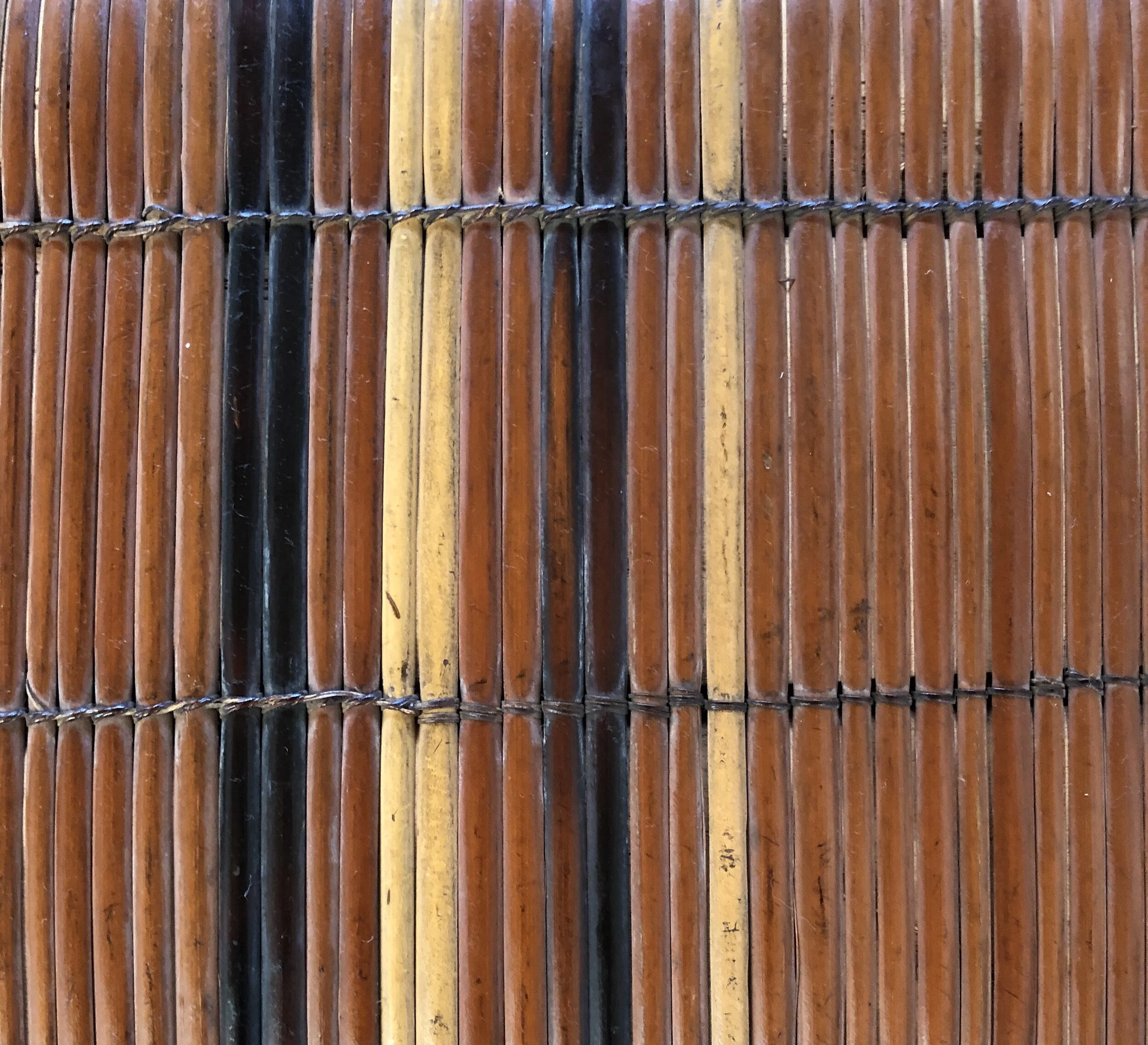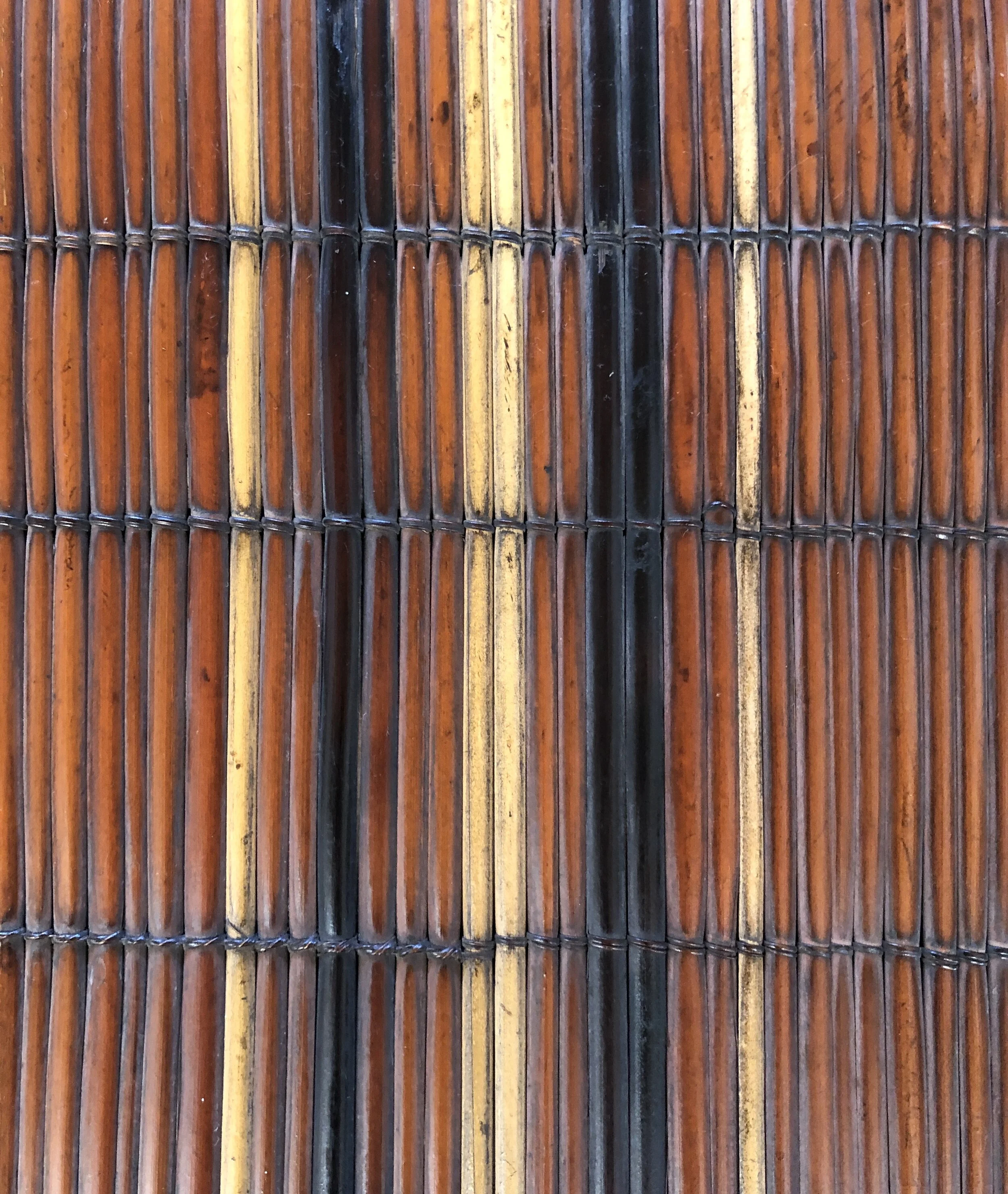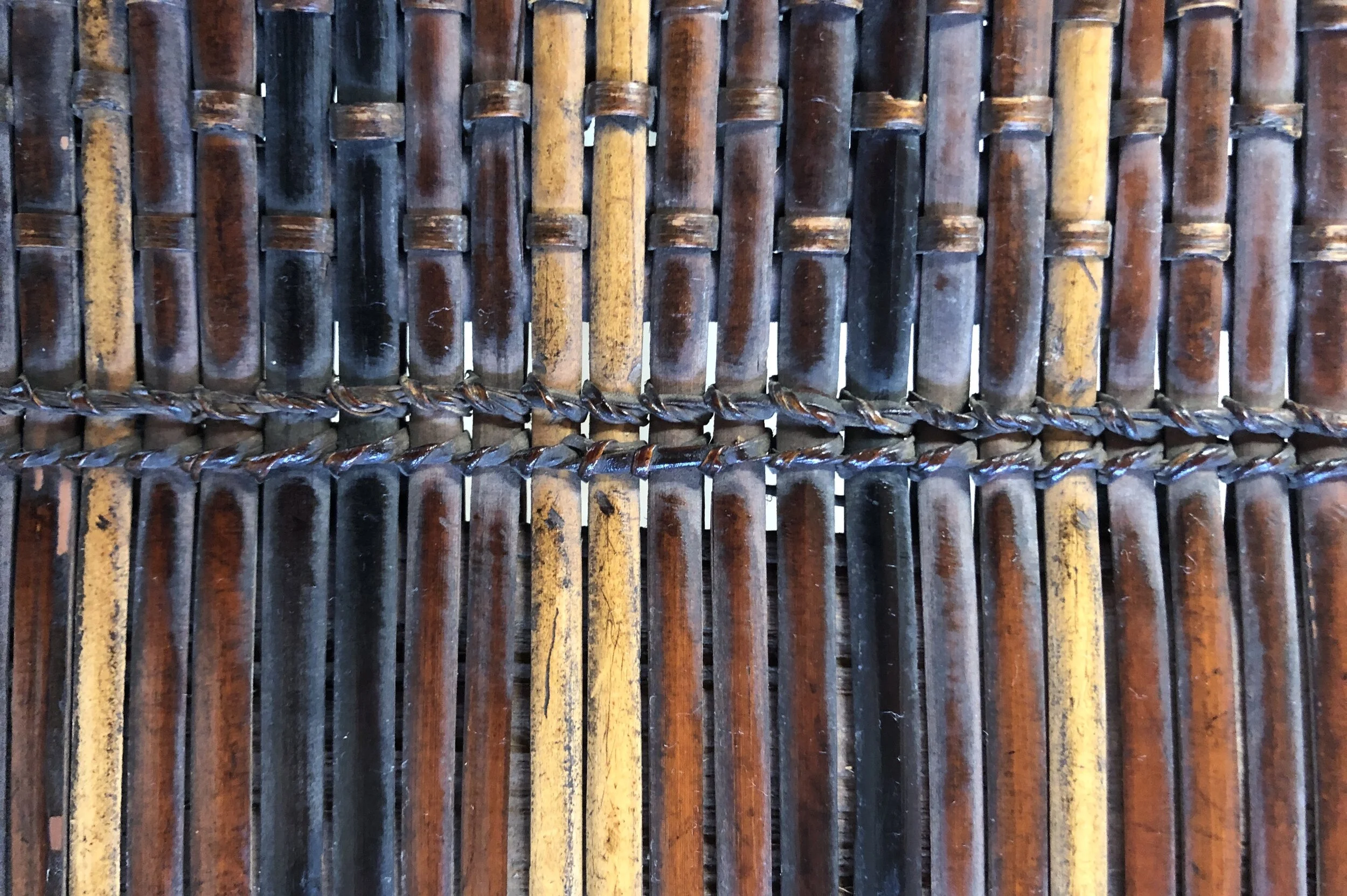Fiber Shield
Lokele people, DR Congo, c. 1900
Rush, wood, and plant fibers
51.25” h x 16.25” w (130.18 x 41.28 cm)
Price: $1,800
The American anthropologist Frederick Starr (1912: 35) declared that “[f]ew people in the whole Congo area present as varied and attractive features of decoration and decorative dress as the Lokele”—an assertion to which those acquainted with their fine wicker shields will readily assent.
On offer is one such shield, remarkable for its elegant simplicity. According to Baur and Elsen (2002: 87), the front of a Lokele shield comprises “a series of longitudinal rush strips, with several horizontal, parallel seams that assemble the front and the back rush layers. A thin wooden board is inserted between two seams, between the two rush layers. These wooden boards are meant to keep the shield flat widthwise and reinforce it. The top and the base do not carry wooden boards but are reinforced by more seams, close to one another. To prevent the small wooden boards from falling from the edge, the perimeter of the shield is trimmed with a thin braiding of plant fibres.”
As is customary in Lokele shields, the back is identical to the front save for the addition of a firmly-attached “long and narrow handle” that is “longitudinally arched on both its faces” (Baur and Elsen 2002: 87). The example at hand is without a handle, and it is difficult to determine whether this was by design or the result of detachment of the original.





